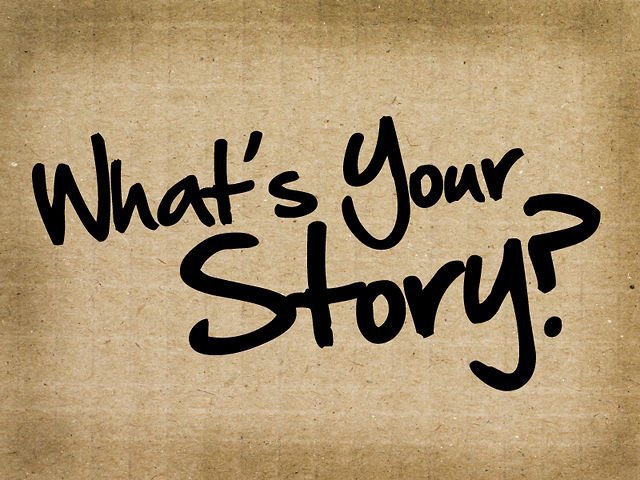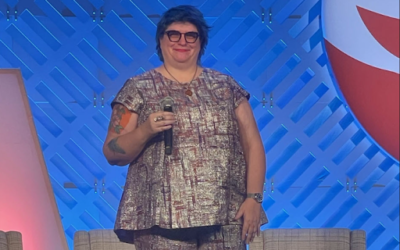Your Story Starts As A Draft And Improves With Time And Thought
When you write your story, do you leave room for edits?
More importantly, when writing stories about the people you encounter, do you leave room in the margins for new information?
You need nothing outside of yourself to do the best you can some of the time.
I have zero expectations that you will commit to self-reflection, powerful connections, and authentic conversations 100% of the time with every single person you meet.
Zero expectations.
What if, with one person during one conversation once a day, even one day a week, you try to do something different?
You can do that…and I can help!
Learning to leave room in the margins takes practice
I confess, where this becomes a challenge for me is when attempting to connect with myself. Perhaps it is the extroverted nature of my personality, but I find talking out loud with others easier than listening to my inner dialogue.
I needed practice noticing Head, Heart, Action response patterns in others before I dared look inward. It wasn’t until this became a habit that I began to listen to my inner voice.
Both internal and external work needs to occur. It does not matter which one fits best for you first; practice some of the time until both become a little more comfortable and then raise the bar and start again.
As you begin to notice your two “go-to” response patterns, dig up the roots of these behaviors, decide what to keep and what to change. You already have the tools needed to excel.
Remember, Head, Heart, and Action modes exist in all of us. Two of these modes are typical and comfortable. The third mode fuels our excuses and self-limiting beliefs and motivates us through our crucible moments in life.
This fuel is what I like to call a “gas pedal,” and it is exactly what you already have at your disposal to try some of the time.
As you notice response and behavioral patterns in others and in yourself, it is crucial not to make meaning of these patterns and just notice them for what they are.
Remember that these patterns often exist due to a crucible moment that we have lived through and inform our responses consciously or unconsciously. Thus, we are only responsible for the roots of our patterns.
As such, we need to leave a space for others to be differently right.
We are all more complicated than we project to others. Providing a sense of space is key to better connections and communications.
We present a story about ourselves to others
Our stories are how we consciously express ourselves to others.
They reveal how we want to be received, identified, validated, and perceived.
We may also unconsciously present a story that is either in alignment or incongruent with how we believe we present ourselves.
Either way, others write a story about us that we cannot do anything to prevent. Over time, they may alter this narrative, but that is up to them. This makes sense. It is their work that needs to be done.
The bad news is that you can’t force them to change their narrative.
The good news is that we can work on the stories we write about them. We are responsible for these stories, and we can edit them accordingly.
The story I wrote about a friend, and what I learned about my narrative
Often in diversity trainings, we are told never to make judgments and assumptions about others. Then we do. When we get caught or even catch ourselves, we might grow defensive, come up with excuses, or even do nothing but freeze in our tracks – caught.
Instead of feeling like failures, why don’t we just work with the stories we write? Instead of trying to prevent something we do all the time, let’s work with the stories we write and leave room for edits.
We write stories about others for two important reasons.
- We need to feel safe.
- We need to feel prepared.
There is no value judgment here for either of these reasons. The key, though, is understanding that we might not be right. Now, I am not saying that we are wrong, just that we might be able to be, well…“righter.”
I have a dear friend who nearly cut out of my life because of the story I wrote in my head about her.
Eating out with her was an ordeal. She would cross-examine the server, sometimes even coax the chef out of the kitchen to explain the preparation of a meal before she ordered.
Why did she make everyone jump through these hoops for her meal…? Everything had to be on the side, left off, added, modified.
It was embarrassing.
But one day we were in a workshop together. Everyone was taking a break, having coffee and snacks. And I watched as her face became mottled, then bright red, and suddenly she was gasping for breath.
She got out of the room and into the hallway, where she begged me to find her EpiPen. Someone in the room was eating peanuts in the shell…the very presence of the oil in that room was enough to cause anaphylaxis.
Suddenly, I realized why she was so particular, so diligent about ordering her food. So I made an edit in the margins of the story I’d written about her.
Every good story starts as a draft
What if we take the stories we write and treat them as rough drafts rather than completed or final manuscripts? Once we notice the stories we write about others – and ourselves – we can print these stories out.
Now, we understand what we are working with and can interpret our stories as flexible components based on choices and habits.
Part of being enough is anticipating edits, fixing bugs, addressing errors, and leaving room for improvements.
If we print our draft stories out triple-spaced with extra-wide margins, we seek feedback, suggestions, comments, and edits.
But, leaving room for edits isn’t possible without writing a draft in the first place. It is the expectation of change that allows the draft to be edited. Our lived experiences inform the draft, and our in-the-moment connections with others lead to edits that make us…“righter.”
If you check out my book, Good Enough Now, you’ll find some exercises you can do to challenge your narrative – about yourself and the people in your personal and work life.
Want help writing your story? Contact me, and we’ll get a conversation started.
Related reading:
Keep Social Justice Issues at the Center of the Center
The Importance of Purposeful Design Flaws
Why you should stare entitlement in the face
Take Your Event To The Next Level, Book Jess Today!
Take Your Event To The Next Level, Book Jess Today!
Related Blog Posts
What if it happens?
What if it happens? In 2016, the morning after the Presidential election was called for Donald Trump, the opening session sound check and breakfast buffet went as planned. As the ballroom began to fill up, about half of the participants were...
Welcoming back audiences that might be at different comfort levels after the last year?
Welcoming back audiences that might be at different comfort levels after the last year? A different question – What would you keep? March 6th. May 12th. May 15th. We all have dates from the past year that we will remember. Perhaps it was a...
Jessica Pettitt: Championing Diversity and Inclusion as a Keynote Speaker
In the dynamic world of keynote speaking, Jessica Pettitt stands out as a beacon of diversity, inclusion, and transformational change. Her unique approach combines humor, real-life experiences, and actionable insights, making her a sought-after...











0 Comments